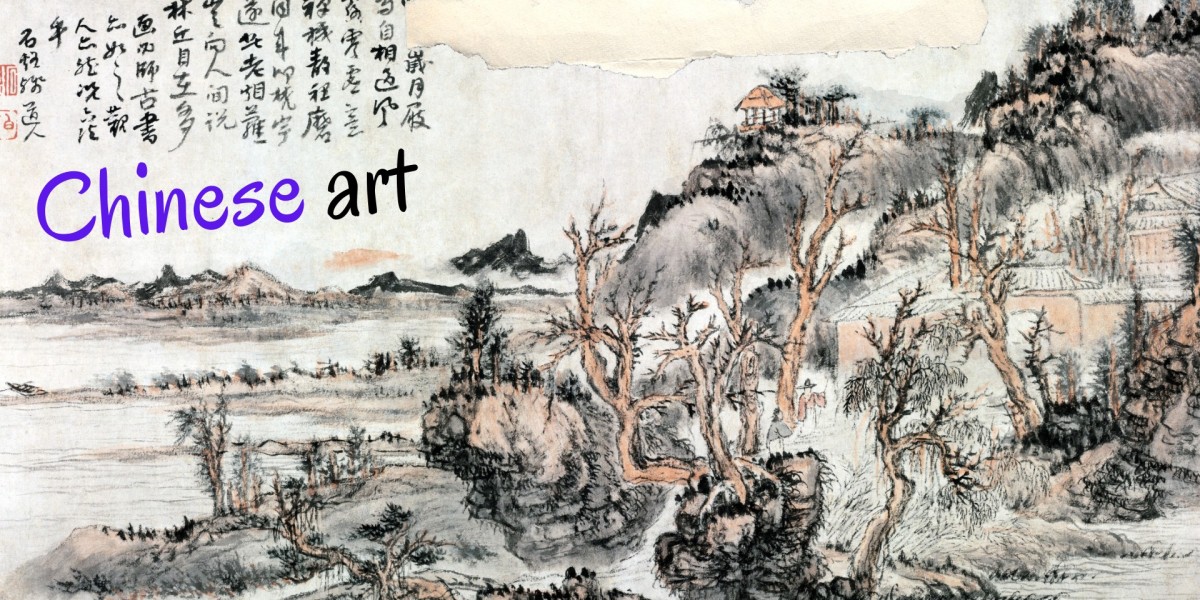From the ancient dynasties to the contemporary scene, Chinese artists have continuously pushed the boundaries of creative expression, embracing innovation while respecting time-honored practices. This post delves into the defining features of Chinese art and explores why it has captivated the world for centuries.
The Foundations of Chinese Art: Philosophy and Nature
Chinese art’s evolution is deeply intertwined with Confucianism, Taoism, and Buddhism, philosophical and spiritual frameworks that have shaped Chinese society and values for centuries. Confucian ideals of balance and propriety emphasize harmony between the individual and the community, reflected in the careful precision of Chinese painting and calligraphy. Taoist principles of flowing with nature also inspire landscapes and natural elements as core subjects in Chinese art, capturing the spirit rather than the exact likeness of the scene.
Buddhism brought spiritual themes, seen in serene sculptures, elaborate murals, and meditative brushwork. The emphasis on natural harmony extends to the artist’s tools, where materials like silk, paper, ink, and brush are carefully chosen for their quality, allowing the artist’s intentions to be expressed with clarity and refinement.
Traditional Forms of Chinese Art: Painting, Calligraphy, and Porcelain
Chinese art forms are numerous and varied, yet ink painting, calligraphy, and porcelain stand as three pillars of the tradition.
Ink Painting: This ancient technique, often executed on paper or silk, features landscapes, birds, flowers, and human figures rendered with brush and ink. Rather than striving for photographic realism, Chinese painters focus on capturing the spirit of the subject through expressive brushstrokes. The renowned "Four Treasures of the Study"—brush, ink, paper, and inkstone—are essential tools in creating works that communicate the artist's spirit as much as their technical skill.
Calligraphy: In Chinese culture, calligraphy is more than just writing; it’s a form of art. Each brushstroke is a balance of strength and grace, and the structure of each character expresses rhythm and energy. Calligraphy holds such significance that it’s often displayed as art itself, reflecting the artist’s personality and mastery over their mind and body.
Porcelain and Ceramics: China’s porcelain, often called "china" worldwide, is one of its most celebrated art forms. Ceramics produced during the Tang, Song, and Ming dynasties showcase the elegance and attention to detail Chinese artisans are known for. The classic blue and white designs of Ming porcelain, with intricate patterns and vibrant hues, are globally admired.
Contemporary Chinese Art: Fusion of Tradition and Modernity
The 20th and 21st centuries brought tremendous change as Chinese artists began experimenting with modern styles and global influences, yet traditional techniques remain revered. Contemporary artists like Ai Weiwei blend traditional motifs with modern themes, using art as social commentary and reflecting China’s rapid social and economic transformation.
Conclusion: Why Chinese Art Endures
Chinese art’s universal appeal lies in its ability to balance tradition and innovation, spirituality and realism, simplicity and complexity. It offers a lens into Chinese culture and philosophy, resonating with art lovers around the world. Whether it’s the meditative strokes of calligraphy, the evocative landscapes of ink painting, or the delicacy of porcelain, Chinese art is a timeless expression of the beauty and depth of human experience.
Naijamatta is a social networking site,
download Naijamatta from Google play store or visit www.naijamatta.com to register. You can post, comment, do voice and video call, join and open group, go live etc. Join Naijamatta family, the Green app.
Click To Download


